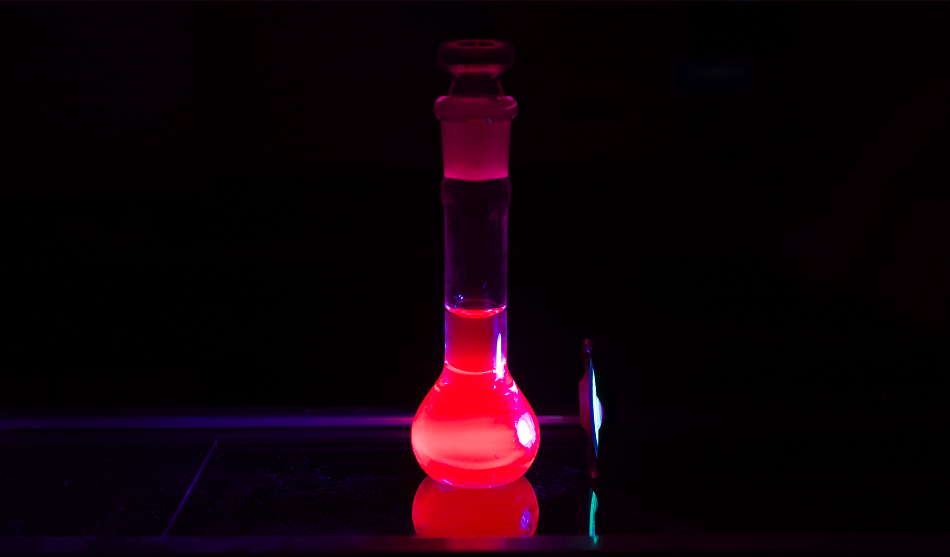Jan 22 2020
A rare-earth element can be made to glow five times more brightly by a stacked nanocarbon antenna, than earlier designs. The nanocarbon antenna could find applications in molecular light-emitting devices.
 The europium Eu(III) complex with nanocarbon antenna emitting fine red light. Image Credit: Hokkaido University.
The europium Eu(III) complex with nanocarbon antenna emitting fine red light. Image Credit: Hokkaido University.
Researchers at Hokkaido University have created a unique molecular design that makes a europium complex to glow over five times brighter than the best previous design upon absorbing low-energy blue light. The study outcomes have been reported in the Communications Chemistry journal, and could open the door for highly efficient photosensitizers with a broad range of applications.
Upon absorbing light, photosensitizer molecules become excited and subsequently transfer the excitation energy to another molecule. They find applications in energy conversion systems, photochemical reactions, as well as in photodynamic therapy, which involves the use of light to kill certain types of early-stage cancer.
While designing existing photosensitizers, energy is often lost unavoidably. Therefore, they are not so efficient at absorbing light and transferring energy as expected by researchers. Moreover, it necessitates high-energy light, like UV, for excitation.
Yuichi Kitagawa and Yasuchika Hasegawa from the Institute for Chemical Reaction Design and Discovery (WPI-ICReDD) of Hokkaido University collaborated with colleagues in Japan to optimize the design of traditional photosensitizers.
As part of their concept, the lifetime of a molecular energy state known as the triplet excited state is extended and the gaps between energy levels within the photosensitizer molecule are minimized. The result is a reduction in energy loss and highly efficient use of photons.
A nanocarbon “antenna” was made by the researchers using coronene—a polycyclic aromatic hydrocarbon that has six benzene rings. After stacking two nanocarbon antennas on top of each other, they are connected to the rare earth metal europium on either side.
The bonds between europium and the nanocarbon antennas are strengthened by adding additional connectors. Upon absorbing light, the nanocarbon antennas transfer the energy to europium, making the complex to emit red light.
From the experiments, it was observed that light with wavelengths of 450 nm was best absorbed by the complex. Upon shining light from a blue light-emitting diode (LED) on the complex, it glowed over five times brighter than the europium complex that holds the strongest known emission under blue light to date. The team also proved the ability of the complex to endure high temperatures of more than 300 °C due to its rigid structure.
This study provides insights into the design of photosensitizers and can lead to photofunctional materials that efficiently utilize low energy light.
Yuichi Kitagawa, Researcher, Institute for Chemical Reaction Design and Discovery, Hokkaido University
Using the new design, molecular light-emitting devices can be fabricated, besides other applications, stated the researchers.
This research was funded by Grant-in-Aid (17K14467, 19H04556, 18H04497, 18H02041) and the Institute for Chemical Reaction Design and Discovery (ICReDD), established by the World Premier International Research Initiative (WPI) of MEXT, Japan.